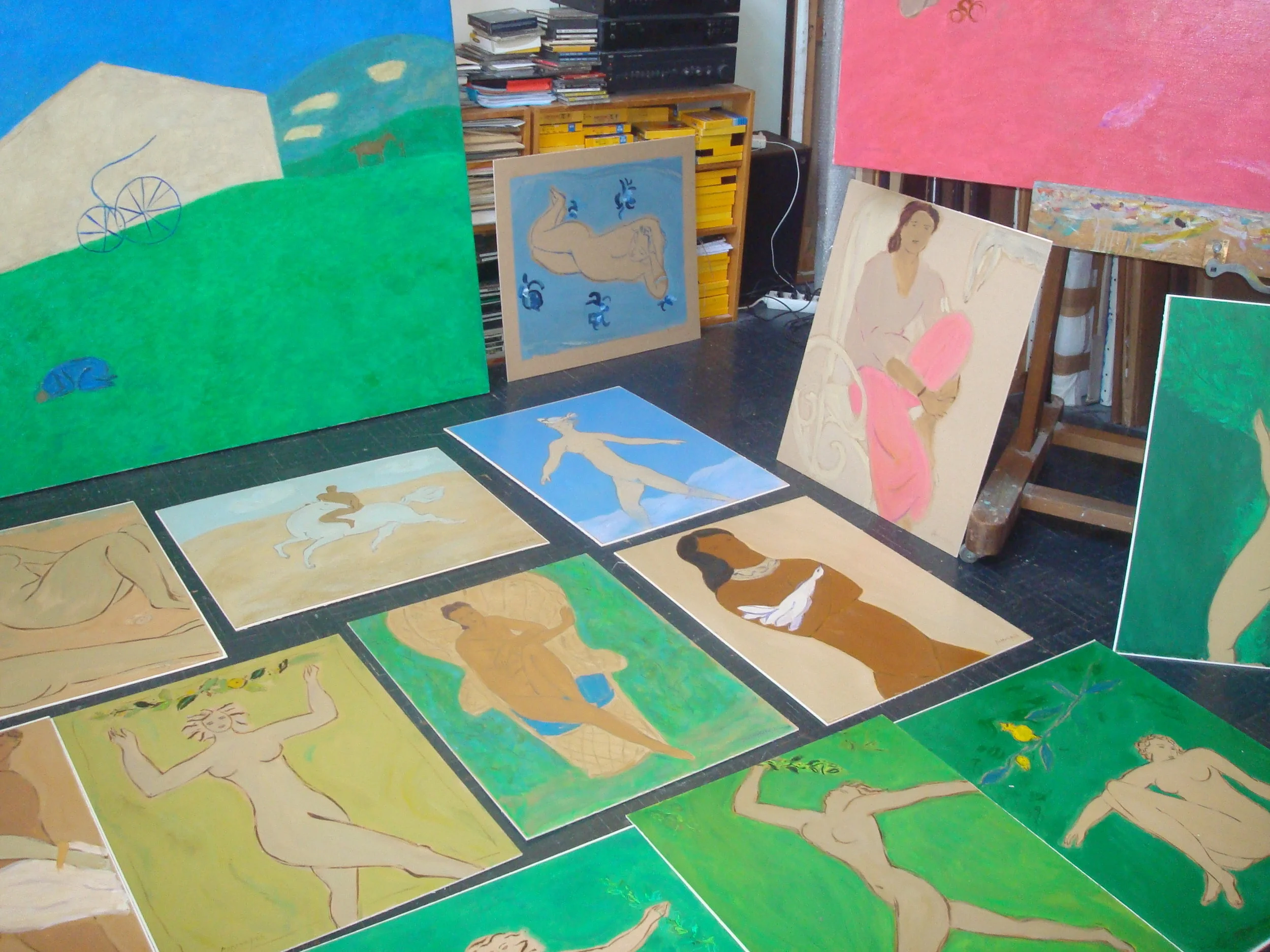PIERRE BONCOMPAIN: Cantique des Cantiques/ Song of Songs
Song of Songs is perhaps the most celebrated and influential book in the Hebrew Bible. It is attributed to King Solomon the Wise (970-931 BC) and consists of a collection of poems and songs composed around the celebration of one theme: the love of the human couple.
Pierre Boncompain fell in love with the Book many years ago. He says:
“…I’ve returned over and over again to the subject matter because it corresponds to my quest for harmony. It is a poem about desire, about love’s ceaseless movement. I love to come back to this golden age where men and animals lived in harmony in a Garden of Eden setting.”
For me the message I draw from the Song of Songs is a message of beauty. The calling of the artist is to exalt beauty, to create with it a path for humanity. Beauty leads us to love.
This exhibition includes oil paintings covering the full cycle of the Song of Songs and is one of the most beautiful and poetic bodies of work we’ve had the pleasure to show.
A CONVERSATION WITH PIERRE BONCOMPAIN
The artist's studio
In the fall of 2017, Pierre Boncompain talked with University of San Francisco Art History Professor Emeritus, Jean Audigier, and answered questions about his interest in, and interpretation of, the Cantique des Cantiques / Song of Songs.
What drew you to this particular text?
What attracted me to this text is that it is a love poem: the first, the oldest, and the most beautiful. And I believe that each work of art, each painting, should be a declaration of love.
Can you tell us a bit about your personal history with this subject that has been of great interest to you over many years?
One day I was contacted by an Italian publisher from Milan who commissioned me to illustrate The Song of Songs. Every two or three years, this publisher devoted himself to publishing a rare book with the only goal, not to make a profit, but to achieve excellence. He wanted to create unique books of great texts in order to call attention to works he considered treasures belonging to the patrimony of humanity. Other titles included Don Quixote, and from the Bible: Ecclesiastes and the Apocalypse. The publication of the Song of Songs was a superb achievement; a copy was offered to Pope John Paul II and is in the Vatican Library collection.
Of course, I had to overcome my initial apprehension of measuring up to this project, but I took a leap of faith. Since then I’ve returned over and over again to the subject matter because it corresponds to my quest for harmony. It is a poem about desire, about love's ceaseless movement. I love to come back to this golden age where men and animals lived in harmony in a Garden of Eden setting.
Can you comment on the work of Marc Chagall and his interpretation of the Song of Songs? How do you see your own voice in context of his work?
The New York Gallery installation
Marc Chagall had a very unique relationship with the Bible. He is probably the most inspired and the most mystical of those who have used the Bible as subject matter; he has a kind of simple yet grandiose imagery. Like myself, Chagall completely explored the mystic element and it is there that one finds the unique quality of the Song of Songs, the pairing and contrast between a burning sensuality and spirituality.
What is the overall message of the text for you?
For me the message I draw from the Song of Songs is a message of beauty. The calling of the artist is to exalt beauty, to create with it a path for humanity. Beauty leads us to love.
How would you describe the mystical role of color in your work? Does it play a key role in the Song of Songs?
Of course the role of color is essential. Renoir used to say:" We must make things more beautiful." Color is the angels' trumpet and a primary means of creating that beauty. But perhaps Hans Hoffman said it best:
The whole world, as we apprehend it visually, is revealed to us by the intervention of the mystical world of color. All our being is nourished by this.
Thus, this mystic quality of color must be expressed in the work of art.








































































